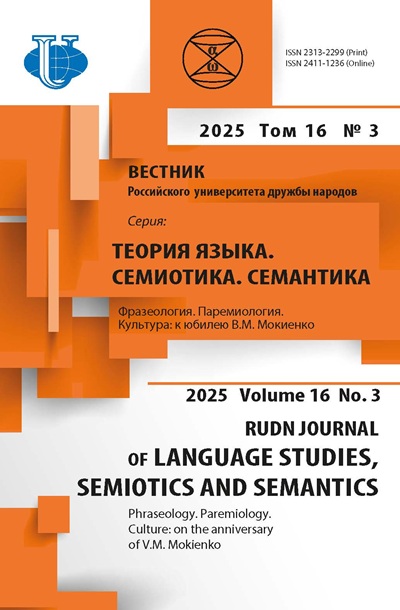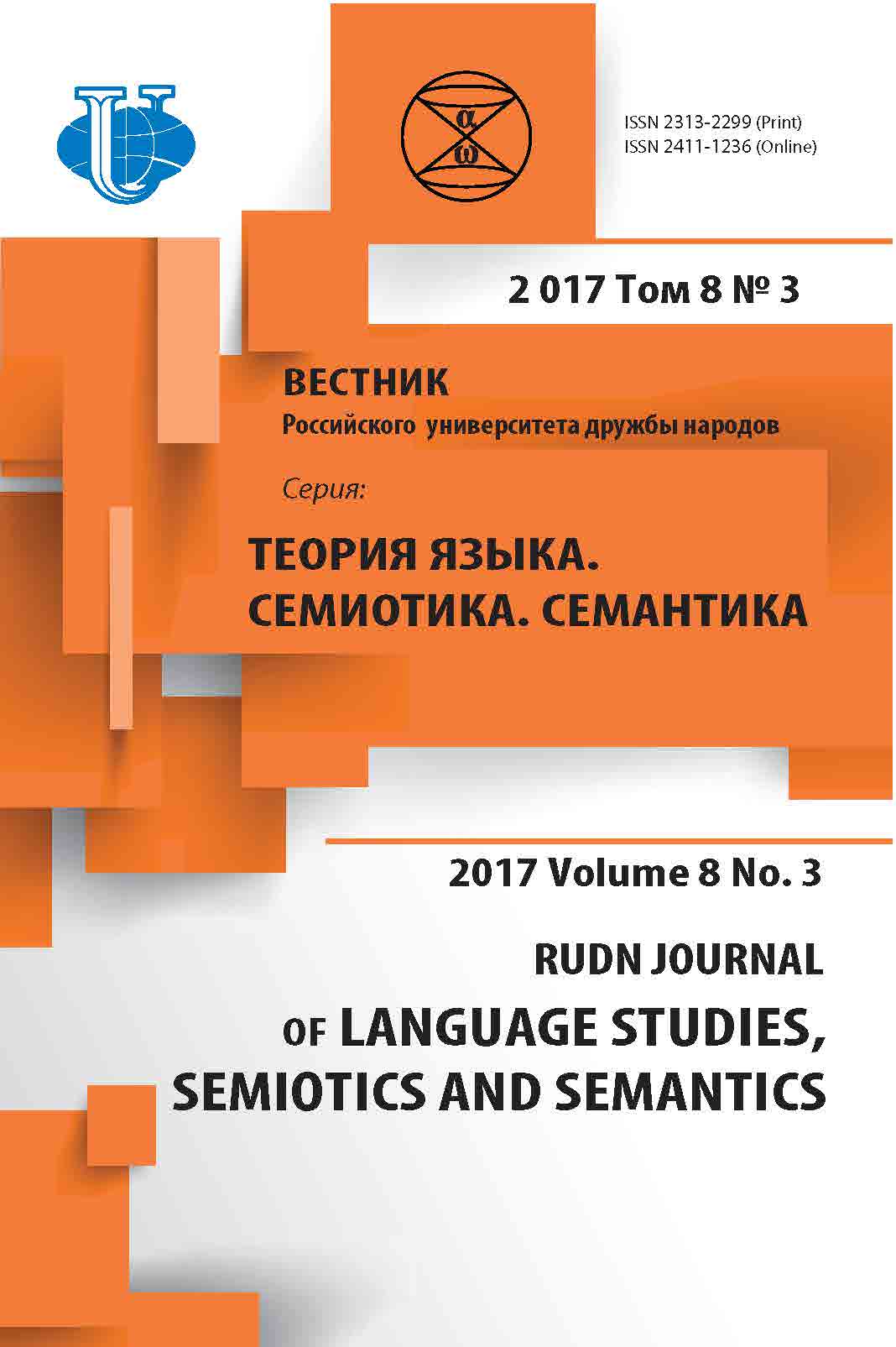ПЕРЕВОД: ПРЕДЛОЖЕНИЕ ИЛИ ВЫСКАЗЫВАНИЕ?
- Авторы: Семёнов АЛ1, Ершов ВИ2, Нелюбова НЮ3
-
Учреждения:
- Московский государственный лингвистический университет
- Московский государственный институт международных отношений (университет) МИД России
- Российский университет дружбы народов
- Выпуск: Том 8, № 3 (2017)
- Страницы: 636-642
- Раздел: СТАТЬИ
- URL: https://journals.rudn.ru/semiotics-semantics/article/view/17025
- DOI: https://doi.org/10.22363/2313-2299-2017-8-3-636-642
- ID: 17025
Цитировать
Полный текст
Аннотация
Традиционно считается, что письменно переводчик переводит текст по предложениям, которое в этом случае и является единицей текста и перевода. В ситуации устного перевода переводчик переводит высказывание. Высказывание может быть сложным по структуре и воспроизводится с паузами, которые могут быть использованы для «вклинивания» перевода. В отдельных случаях высказывание и предложение могут совпадать по форме. Анализ деятельности переводчика и материалов, подлежащих переводу, показывает, что традиционное различие высказывания и предложения в отношении к типу перевода (устный или письменный) не всегда актуально. Высказывание по форме может совпадать с предложением и быть актуальным для письменного перевода. Наличие пауз при воспроизведении высказывания структурирует высказывание, превращая его в последовательность коротких фраз, удобных для перевода. Фраза является минимальной смысловой единицей, пригодной для перевода. Формально по технологии перевода фраза должна содержать в качестве опорных элементов смысла обозначения субъекта и действия. В рабочей ситуации переводчик может использовать технику перефразирования и восполнить недостающий опорный элемент смысла, не изменяя его объем.
Ключевые слова
Об авторах
А Л Семёнов
Московский государственный лингвистический университет
Автор, ответственный за переписку.
Email: arksem@gmail.com
Аркадий Львович Семенов, доктор филологических наук, профессор, профессор кафедры переводоведения и практики перевода английского языка Переводческого факультета Московского государственного лингвистического университета; научные интересы: теория перевода, новые информационные технологии в переводе
ул. Остоженка, 38, Москва, Россия, 119034В И Ершов
Московский государственный институт международных отношений (университет) МИД России
Email: ershovik@mail.ru
Виктор Иванович Ершов, кандидат филологических наук, доцент, доцент военной кафедры при МГИМО МИД России; научные интересы: теория перевода, инновационные подходы в обучении перевод
пр-т Вернадского, 76, Москва, Россия, 119454Н Ю Нелюбова
Российский университет дружбы народов
Email: at.nelubova@mail.ru
Наталия Юрьевна Нелюбова, кандидат филологических наук, доцент, доцент кафедры иностранных языков Филологического факультета Российского университета дружбы народов; научные интересы: сопоставительные исследования на материале французского, русского и английского языков
ул. Миклухо-Маклая, 6, Москва, Россия, 117198Список литературы
- Бойд, Брайан. Владимир Набоков: американские годы: Биография / Пер. с англ. Москва: Издательство «Независимая Газета»; СПб.: Издательство «Симпозиум», 2004.
- Набоков В.В. Дар: Роман. Санкт-Петербург: Азбука-Классика, 2007.
- Семёнов А.Л. Основы общей теории перевода и переводческой деятельности. Москва: Издательский центр «Академия», 2008.
- Nabokov V. The Gift. Режим доступа: http://www.rulit.me/author/nabokov-vladimir/thegift-get-273781.html (дата обращения: 20.05.2017).
Дополнительные файлы












